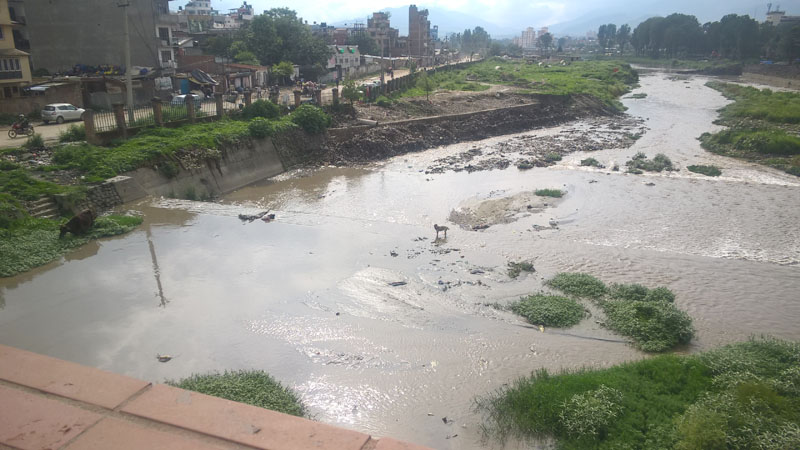Identification of squatters begins
Kathmandu, February 13
The government is all set to collect data on landless people to identify real squatters in Thapathali area.
A team has been formed under the chairmanship of Kishore Panthi, chair of the High Powered Committee for Integrated Development of Bagmati Civilisation. The committee comprises Kathmandu Valley Development Authority, UN Park Development Committee and related stakeholders as member.
Project Manager of HPCIDBC Rajesh Prasad Singh said the team has already begun data collection from the settlement in Thapathali just behind Paropakar Maternity and Women’s Hospital.
“We have begun data collection from Thapathali to identify real landless peoples to relocate them to government-built apartments in Ichangunarayan,” Singh told The Himalayan Times, adding, “First
of all we will collect the complete data then only the remaining process of relocation will start.” He said if the government succeeds in relocating squatters from Thapathali, then this model will be replicated in other squatter settlements of Kathmandu Valley.
According to HPCIDBC, six multi-storey buildings were constructed more than six months ago to relocate squatters of Kathmandu Valley. Though the apartments are ready there is no sign of squatters’ replacement taking place.
“The buildings are ready and we have also begun the identification process. Apart from this there are other issues. Whether these squatters will be placed on the basis of rent or will they be relocated free of cost; the facilities they will be able to available; the repairs and maintenance cost of the apartments; and many other issues are still to be decided,” HPCIDBC project Manager Singh said.
It is said that after Pushpa Kamal Dahal was elected prime minister instruction that landless people were ‘not to be touched was relayed from the high level.
The Department of Urban Development and Building Construction said the cost of constructing the six buildings was around Rs 115 million.
Meanwhile, the landless peoples have expressed dissatisfaction with the government’s neglect. President of Nepal Landless Democratic Union Party Hukum Bahadur Lama said their team had submitted letters with their 21-point demand to the related political party office and the concerned agencies several times demanding that the squatters’ problem be resolved, but no one had bothered.
“We have visited the buildings meant for squatters, but without solving our problems and getting demands fulfilled we can’t relocate leaving our jobs and children’s schools.” Lama said. He claimed there are more than 29,000 landless peoples in Kathmandu Valley in 73 settlements. Hundreds of people have also been occupying public land in Lalitpur and Bhaktapur for more than four decades.
Squatters have encroached Kathmandu Valley’s river banks have for the4 last 43 years, but government has failed to settle them permanently so far. The last time the government tried to clear the river banks of the Valley in 2012, the squatters had attacked government authorities and occupied the banks.
There were 1,082 out of 8,000 families who had registered as squatters with DUDBC in 2012. There are 73 places in Kathmandu and three places each in Lalitpur and Bhaktapur have squatters’ settlements. Among them Thapathali was the recent encroached river bank, which squatters occupied 10 years ago.






